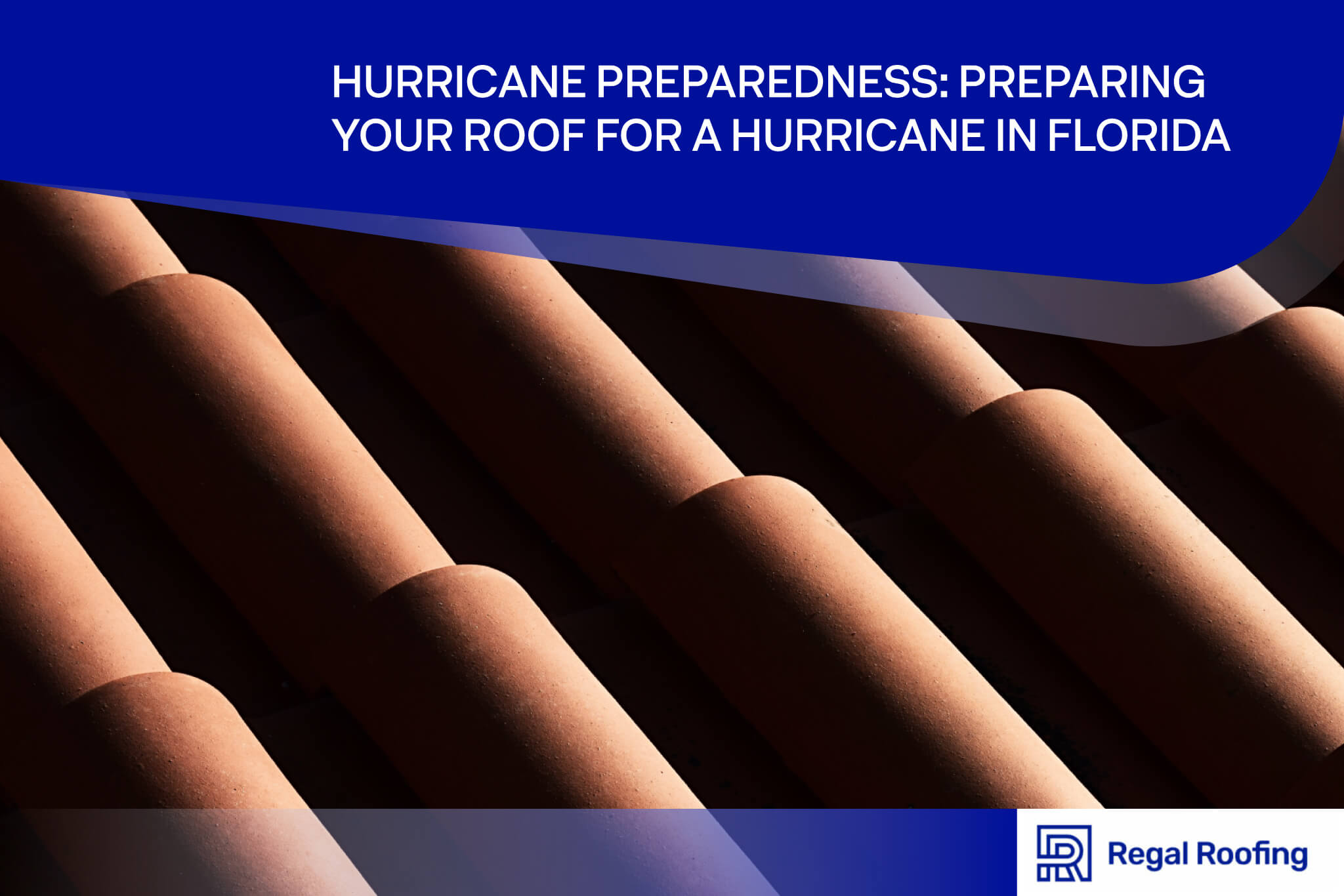Every Floridian homeowner shares a common desire: a home that’s safe and secure, especially during the notorious hurricane season. How does one strike the balance between realizing when to replace the roof and ensuring hurricane preparedness? This in-depth guide is set to equip you with the insights on how to prepare your roof for a hurricane and the warning signs indicating you need a new roof.
Florida Hurricane Season
Hurricanes are relentless. Their ruthlessness can manifest in lifting shingles, tearing off gutters, and even in extreme cases, launching roofs airborne. But that’s not the only menace; water intrusion post-hurricane can lead to severe leaks and structural damages.
When is Hurricane Season in Florida?
Hurricane season starts in Florida on June 1st , and continues until November 30th. The peak threats looming large from August through September. As the previous season wraps up, gearing up for the next by preparing in early spring is paramount to being safe during Florida hurricane season.
When Should You Begin Preparing Your Roof for Hurricane Season?
Ideally, you should begin preparing your roof for hurricane season as soon as the previous season ends. Early spring is a great time to start.
How Does a Hurricane Damage a Roof?
Hurricanes can bring strong winds, thunderstorms, and rain. They can lift shingles, tear off gutters, or even send entire roofs airborne. Additionally, hurricanes can bring flooding and tornadoes. Because of the dangers that hurricanes bring, it is important to prepare your roof in advance.
How To Prepare Your Roof For A Hurricane
1. Get a Roof Inspection
Detect and rectify vulnerabilities to ensure you have a hurricane proof roof. If you are unsure, reach out to roof inspection experts to secure a hurricane proof roof with a thorough inspection.
2. Clear Gutters and Drains
A clear pathway ensures rainwater flows, reducing chances of a roof leak during storms.
3. Trim Nearby Trees and Remove Debris
Weak trees and debris are potential missiles during a hurricane. Ensure they’re not close to your roof by trimming trees and ensuring no tree debris is left outside.
4. Prevent Ice Dams
While uncommon in many areas in Florida, it’s essential to keep ice from accumulating.
5. Cover Skylights
Use protective material to cover skylights. During hurricanes, they can be the most vulnerable part of the roof.
6. Prepare an Emergency Roof Tarp
Having an emergency roof tarp ready can be a lifesaver for unforeseen leaks during a hurricane.
7. Install Hurricane Roof Straps and Mount Hurricane Shutters
These straps, adhering to Florida hurricane roof codes, anchor your roof. Shutters protect windows and doors as well to help keep your home secure in the storm.
8. Secure Outdoor Furniture & Store Loose Items Around Your House
Store or tether loose items and outdoor furniture around your house. They can be dangerous projectiles during strong winds.
9. Keep up to Date with Your Roof Insurance and Warranties
Insurance can help you recover from hurricane roof damage faster, so make sure your coverage is up to date.
10. Continue with Regular Roof Maintenance
Post storm, it’s not just about cleaning up but ensuring that the integrity of your roof is uncompromised. Regular maintenance, like addressing minor issues or even keeping a vigilant eye for hurricane damages, can make all the difference. Address minor issues like loose shingles before they escalate, and dive into our other roofing maintenance tips for more details.
What To Do During a Hurricane?
- Stay Informed. During a hurricane, staying informed is your best bet. NOAA Weather Radio, among other platforms, provides crucial updates. Also, having an emergency roofer’s contact within arm’s reach can be a gamechanger.
- Emergency Roofer. Post storm, ensure you inspect every nook and cranny. Even minor damages can lead to significant repercussions down the line. If damages are extensive, considering a roof replacement isn’t off the table.
Have the contacts of a trusted roofer handy, in case of emergencies.
Caring for Your Roof After a Hurricane
Inspect for damages after the hurricane and regularly throughout the year. If you spot cracked shingles, missing shingles, or any other damage, consider repair or a full shingle roof replacement. Don’t wait for a minor issue to become major hurricane roof damage.
Protect Your Roof: Don’t Let Hurricane Season Sneak Up On You
We’ve looked at every part of hurricane roof protection, from how to prepare your roof for a hurricane to caring for your roof after the storm has hit.
As Floridians, we understand the stress that hurricane season can bring in Florida. Your home isn’t just walls and roofs; it’s memories and safety that you want to protect. With hurricane preparedness, you can ensure it remains intact, come rain or high winds.
If you are ready to prepare for hurricane season, we’re here to help. Explore more about the areas in Florida we serve and how we can prepare your roof for when hurricane season starts in Florida.
How to Prepare Your Roof For a Hurricane FAQs
If 25% or more of a roof is damaged, Florida hurricane roof codes often necessitate a full replacement.
Yes, specialized roofers can conduct these inspections, abiding by Florida hurricane roof codes.
Edges, corners, and ridges bear the brunt of hurricane winds, making them the most vulnerable part of the roof.
Deploy your emergency roof tarp to control the leak and call an emergency roofer as soon as it’s safe.
You can use hurricane roof straps and comply with Florida hurricane roof codes to help protect your roof.
Metal roofing offers top-notch resistance to high winds. However, there is completely no hurricane proof roof. For that reason, many Florida homeowners turn to shingles as an affordable yet durable option.


